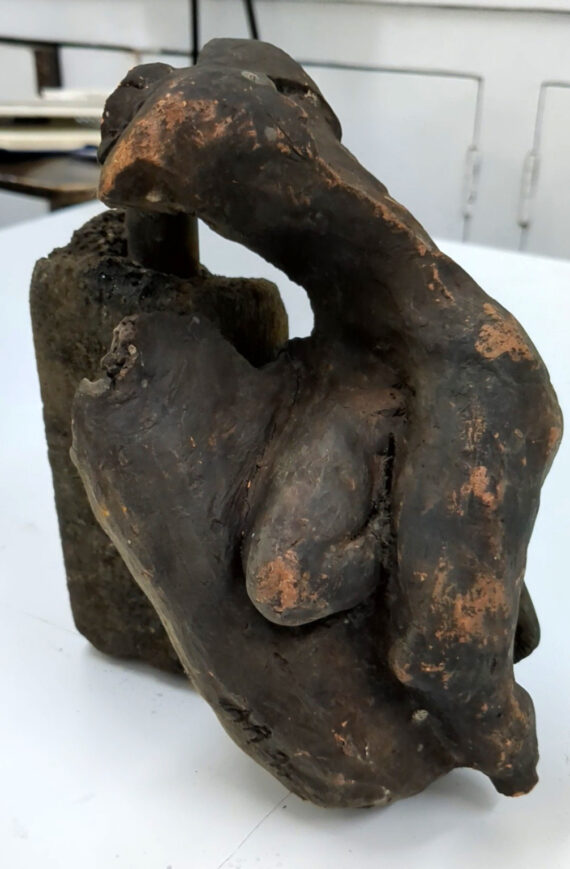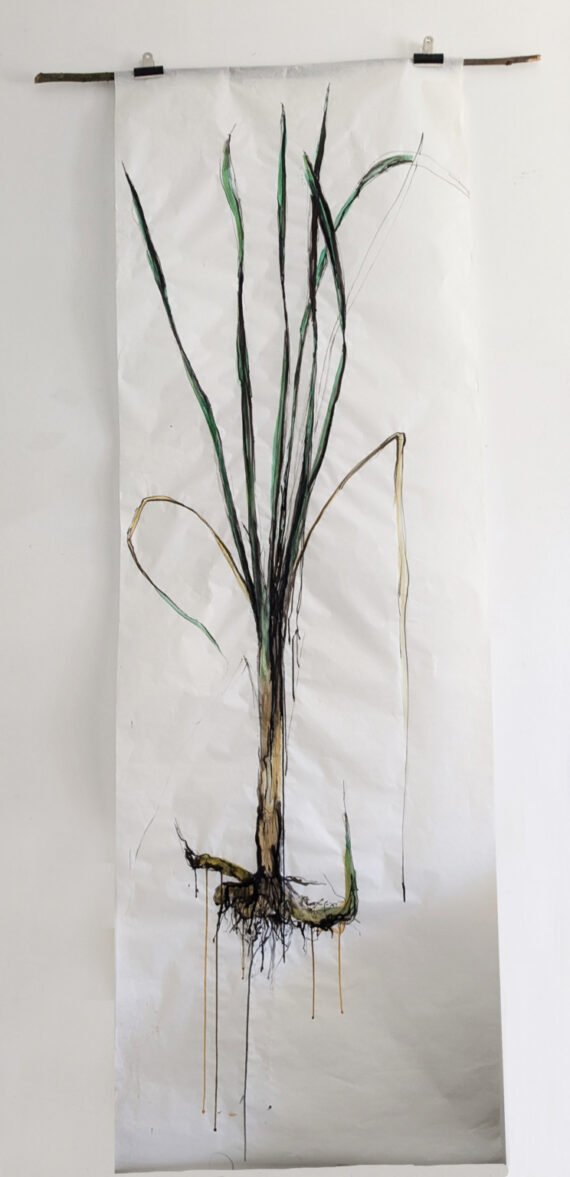Burdock at the nature reserve in September
Drawing burdock with inks on Kozo, exploring the way they bleed. I wanted to give the spiny burrs a soft edge. I made several drawings. The one below uses hand-made black and brown inks using river water and local oak galls, Windsor & Newton coloured drawing inks, compressed charcoal, and river water as a wash. I combined the drawing ink with walnut ink to get a beautiful warm sepia brown which seemed to bleed more than the drawing ink on its own – W&N drawing ink has shellac in it which may prevent it from bleeding so much. My favourite ink for bleed is Quink Ink. Not only does it bleed profusely, but the colours separate out leaving beautiful sepia stains. I have just resolved to draw the burdock again in Quink! I would also like to try making my own walnut ink. I could not find many oak galls last year and my hand-made black ink is down to the last inch – very precious!
Burdock, ink and charcoal on Kozo paper, 90 x 65cm
Richard Mabey: Burdock in art
A book I have recently discovered and loved reading is Weeds by Richard Mabey. Described on the dust jacket as ‘the first ever cultural history of weeds’, it has a whole chapter on burdock – which reveals famous works of art with burdock in (who’d have known!) – some of that chapter I thought I would share here…
Mabey draws attention to many famous works of art with burdock in them, from as early as the seventeenth century. In Claude Lorrain’s Landscape with Dancing Figures and Landscape with Rustic Dance it is painted realistically at the bottom, recognisable by its large drooping leaves, but no flowering spikes. In Landscape with Narcissus and Echo the plant echoes Narcissus’s splayed legs and arms. Mabey also reveals burdock in works by Thomas Gainsborough and references a beautiful study of burdock leaves by Gainsborough, held at the British Museum https://www.britishmuseum.org/collection/object/P_1910-0212-256
Mabey puts forward the idea that “what burdock suggests in these pieces is that beauty can reside in the uneven and the asymmetrical – in the idea of weediness in fact”. He also points to the later work of George Stubbs, Horse Attacked by a Lion (on display at Tate Britain) where the plant plays a front and forward role, echoing the horse’s agonised head. Interestingly, here the burdock leaves are beginning to die, with patches of brown rust. Mabey suggests that the dying leaves in this picture invoke a sense of “elegance under pressure – what you might call grace”.
He also looks at a contemporary work which conveys “elegance in the business of living and ageing” – Janet Malcolm’s series of 28 close-up photographs of burdock leaves in different states of living and dying (2008). Her portraits, he says, give these “uncelebrated leaves” a kind of grace and nobility.
This idea of grace is very poignant. In my drawings, I aim to capture the unkempt, straggly, leggy, asymmetry of the wildflowers and weeds that grow outside, or that intrude into, cultivated gardens. Particularly given the role plants play in our ecosystem and in supporting life on earth and the disregard these plants are often given, the notion of grace recalled by these characteristics is very powerful. Weeds is one of those books that has had a strong resonance for me and Mabey’s writing continues to inform my work…








